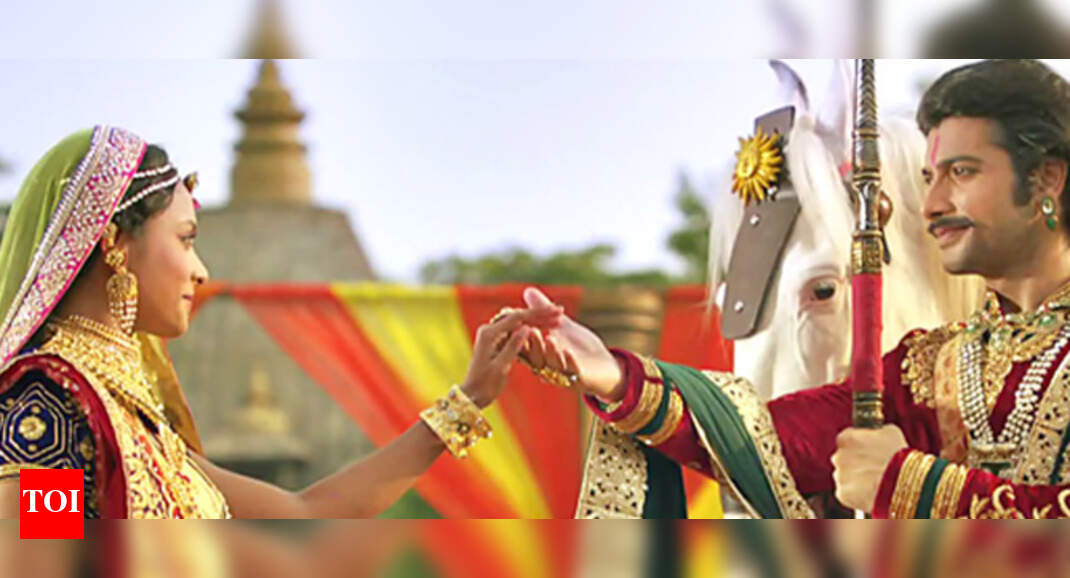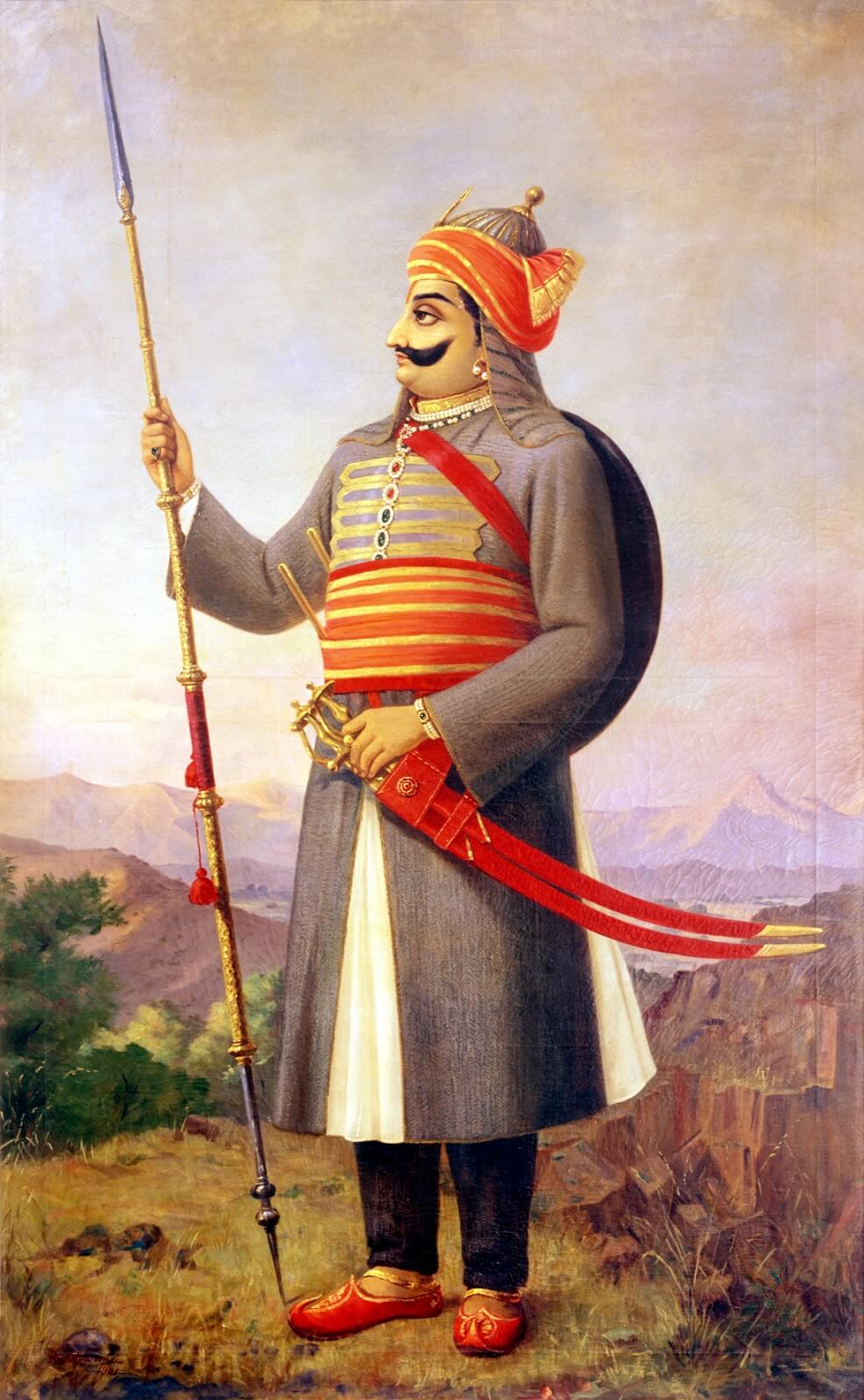

It has produced some of the greatest and most powerful kings that have made the name of Rajputana resplendent in the annals of India.” “The Surya Vamsha is the most famous of the ruling families of India, and the most celebrated of its many branches is the Guhilot family, which has ruled Mewar without a break for nearly fourteen centuries. The land of Chittorgarh rightfully deserved not only Pratap Singh Sisodia, but also the illustrious Suryavanshi Kshatriya clan of Guhilots. Yet the prajas of Mewar proved that the people get the rulers they deserve. Rare is the Prince who gives up power, rarer still is the populace that restores the rightful ruler. He refused to make any compromises.” Background Raja Ravi Varma’s rendition of Rana Pratap He roamed the forests like a fugitive, took shelter in caves, went hungry, saw his children eat grassbread and his queen suffer the life of a tribal woman. “The ordeals he went through to defend his pride makes a hair raising story. Pranams to Pratap Singh, the mighty Maharana of Mewar, and Kshatriya veer Shiromani of the Kali Age. Therefore, for the spirit of Rajadharma to be restored, a shining example of it must be given due honour. They become slaves to pleasure, and those who promise to give it. Without integrity, without self-respect, people let alone a leader, cannot lead lives of dignity. But he who can barter away everything truly has nothing. The rulers of today (as well as their “rajgurus”) gladly betray their Rajadharmaall in the name of “chanakya niti”. And yet, in the lust for power, modern Hinduspay nominal respect to his name but fail to implement his legacy. Such was this symbol of kshatriyata that he commands respect to this day. The Patriot who literally would rather eat grass than give his daughters to mlecchas. The King who risked his kingdom in war to preserve Dharma. The Prince who gave up the throne to preserve family unity. The refurbished ISBT has state-of-the-art facilities, including escalators, glass elevators, a centrally airconditioned departure and waiting area, a high-speed wifi zone, LCD screens, CCTV surveillance, parking, hi-tech public conveniences, information kiosks, an RO plant and a sewage treatment plant.The very name has attained an almost sacred quality from the length and breadth of Bharatvarsh.

While being modern, in its design and appearance, the design carefully incorporates functional requirements.Ĭlearly marked and well constructed buses routes and walkways makes the movement pleasant and safe The redeveloped ISBT is designed as a state of the art, modern integrated Bus Terminal.

It has been described by Delhi government as 'airport-like' in its facilities. Passengers at the Kashmere Gate ISBT in Delhi can now enjoy better amenities with the inauguration of the renovated facility having an air conditioned waiting lounge, food court, glass elevator and escalators. The ISBT Kashmere Gate was initially constructed by the DDA in 1976 and transferred to Transport Department in 1993. The refurbished ISBT has been developed in such a way to provide maximum number of conveniences and latest facilities to the passengers. MAHARANA PRATAP ISBT ,an interstate bus terminal It is a transfer station between the Red Line on the highest upper level and the Yellow Line on the lowest level.Kashmere Gate also serves as the Headquarters for the Delhi Metro. The Kashmere Gate station of the Delhi Metro, lies on both the Red (Dilshad Garden - Rithala) and Yellow Lines (Jahangir Puri - HUDA City Center). Kashmere Gate is located in North Delhi in the Old Delhi area in close vicinity to the Red Fort and the Old Delhi Railway Station.

The Maharana Pratap Inter-State Bus Terminal or MMTC at Kashmere Gate is the oldest and the largest in India catering to buses from Delhi and six other states i.e.


 0 kommentar(er)
0 kommentar(er)
